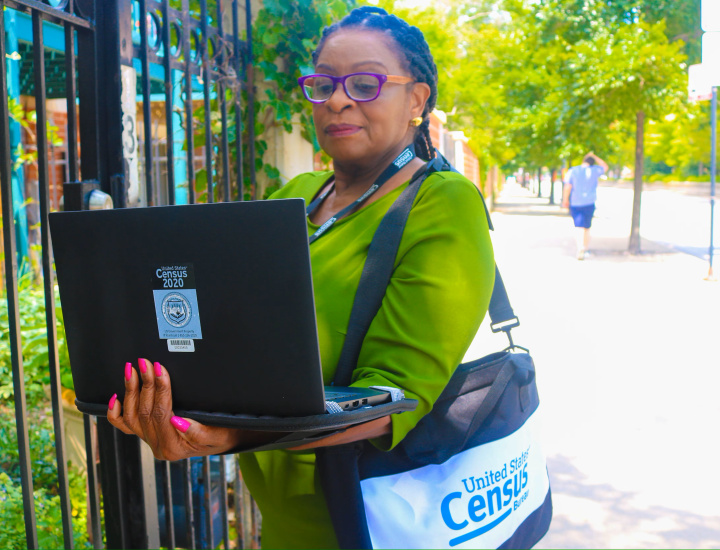Just over a year ago, the William Penn Foundation launched a new set of funding priorities and processes and new ten-year goals. We shared this new information in four community briefings held in July 2024 in neighborhoods around Philadelphia and online. Our new programs, priorities, and processes were guided by almost a year of work by our staff and Board of Directors, informed by conversations with more than 350 residents of our region and experts in our program areas.
The planning process that culminated in our changes a year ago deepened our understanding of the region’s priorities and helped us to develop an approach that is more sensitive to the ever-evolving needs and activities of the non-profit organizations that power social progress. Our changes have been critical for achieving our mission to expand access to resources that will enable the Philadelphia region – and particularly its residents who have been historically excluded from opportunity – to thrive.
In addition to refining and expanding the number of programmatic areas where the Foundation directs grant funds (from three to five), we created a process that relies heavily on a predictable cycle of Requests for Proposals (RFPs). We post notice of upcoming RFPs a year in advance to enable potential applicants to plan accordingly. Our shift to RFPs is part of our commitment to elevating community voice. By asking for your ideas about how to achieve important shared goals, we can support what the community actually wants to do rather than what foundation staff think people should do. And we have heard many great ideas from you about how we can make progress on our shared goals.
Since our first RFPs launched in July 2024, we have received 1,303 applications in response to 36 RFPs. We have read and carefully reviewed every single one of those applications. And, for the first time in the Foundation’s existence, we have tried to make it very clear to the public and all applicants what criteria we use when reviewing applications. To learn more about the applications that were most aligned with those criteria, our staff have completed 357 site visits in the past 12 months. Every one of those visits has been a meaningful opportunity to see important work in action.
Providing the decision-making criteria that guide every application review is part of our commitment to increased transparency. All five of our grantmaking programs have sets of criteria that were informed by our stakeholders and staff. We provide those criteria on our website and in every RFP so that no one has to guess what the William Penn Foundation is looking for in an application. And every one of our RFPs has been accompanied by a webinar to answer questions about the funding opportunity. Over 4,400 people have attended our webinars so far and we have been gratified that they spent their time with us.
When changing our priorities and processes, we were intentional about making funding accessible to organizations that had not been funded by the foundation in the past. We replaced a somewhat lengthy and opaque process, in which it often felt that an interested applicant had to have a connection to a foundation staff member or had to be prepared to engage in conversations that went on for weeks or months, with a process that specifies foundation interests and criteria, utilizes a simpler and much shorter application, widely disseminates opportunities, and takes a maximum of three months from application to decision.
In addition, our Board has articulated grantmaking values, including prioritizing resources for communities that have been most affected by economic inequity, discrimination based on race, gender, or sexual orientation, and other forms of injustice. Thirty percent of our grantees under the new strategy have not received funding from the foundation in the past decade, or perhaps ever. And 28% have executive directors, senior staff, and boards of directors that are primarily composed of people of color.
For those organizations that have applied for and been awarded funding in the past year, we are excited that you are among our grantees. We have launched 19 learning communities that meet regularly and provide an opportunity for all of us to learn from each other - and we’ll be launching more learning communities in the future. Through these communities, the input from our grantees will shape our work going forward and are a place where coordination and collaboration among grantees can blossom.
For those organizations that may have applied for funding and not been awarded a grant, we know that can be a disappointing experience. We have sent out hundreds of emails and held hundreds of phone calls to explain the reasons that we could not award support. Overall, 24% of applicants have been awarded funding since we launched the RFP process. This is evidence that the need for support far exceeds the available resources. This is one of the reasons that we have an objective focused on attracting additional funding to our region. We are always seeking to partner with other funders to increase the amount of grant money available. To date, we have partnered with six co-funders and expect to announce more co-funding in the future. And while it is difficult to predict the amount of available funds, the number of applications, or total requested funds in response to each RFP, we hope that you will consider applying again if you are doing work that you feel aligns with one of our future RFPs and criteria.
Brief early surveys and focus groups of grantees and of those who were not awarded funding during the past year have shown that large majorities feel that using RFPs is a fair way to distribute resources, that the requirements are clear, and that the application is appropriate given the level of available resources. We are grateful for this feedback and positive reinforcement. Later this fall, we will be doing a more comprehensive survey of all applicants and grantees to gather more complete input on what is going well and where we can improve.
In the musical Rent, the cast poses the question; how do you measure a year? We have measured this past year in applications reviewed, grants awarded, applicant and grantee diversity, and stakeholder feedback. Soon, on our website, we will be adding data about how each of the foundation’s objectives is progressing. We, and you, will be able to see, for example, how many more trees are making neighborhoods more livable, how many more children are being prepared for success in high quality early learning programs, how many additional young people are pursuing passions and developing new skills through arts education, how our democracy is growing stronger through increased voter turnout, or many other important outcomes for our region. At the end of our ten-year plan, the progress made on the full set of specific objectives we’ve articulated will be the outcomes that matter as we improve opportunities in our region.
Thank you for everything that you are doing to make our city and region as great as we know it can be. As you reflect on what you’ve seen and heard about the William Penn Foundation’s past year, don’t hesitate to be in touch if you think we could be a better partner in the year ahead.

